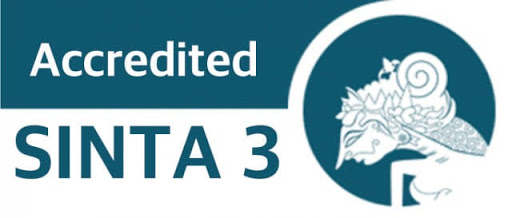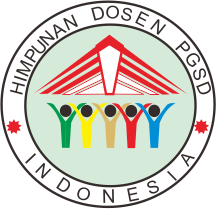Self-confidence as a Supporting Factor for Public Speaking Skills of Prospective Guidance Teachers
Abstract
This research wants to assess self-confidence related to student public speaking skills among BK UNP students, because good public speaking is supported by good self-confidence. The research was carried out using a mixing method using research instruments: questionnaires supported by interviews and observations from 50 students taken at random. The questionnaire has been validated with content validity and empirical validity and produced a validity index of 0.85 and a reliability index of 0.90. This research concludes that BK UNP students have good self-confidence when doing public speaking. From the results of interviews and observations conducted on students, it was found that students should have preparation for appearing in public, both in terms of preparing the material they want to convey and their needs when appearing, overcoming anxiety before appearing, and knowing some common words used by listeners. Due to the limitations of researchers, we only discuss one factor that supports female students' public speaking, namely self-confidence. It is recommended that future researchers conduct research related to public speaking skills in more depth and breadth by looking at other factors that influence public speaking skills and the methods used to improve public speaking skills.
Keywords
References
Bjerregaard, M., & Compton, E. (2011). Public speaking handbook: suppliment to public speaking.
Budi, A., & Tina, A. (2016). Konsep Diri, Harga Diri, Dan Kepercayaan Diri Remaja. In Konsep Diri, Harga Diri, Dan Kepercayaan Diri Remaja (Vol. 23, Issue 2, pp. 23–30).
Bylkova, S., Chubova, E., & Kudryashov, I. (2021). Public speaking as a tool for developing students’ communication and speech skills. E3S Web of Conferences, 273. https://doi.org/10.1051/e3sconf/202127311030
Desri, S., & Rahmi, M. (2023). Kemampuan Public Speaking pada Mahasiswa Manajemen Universitas Andalas Kampus Payakumbuh. Jurnal Pendidikan Tambusai, 7(2), 53–57. https://doi.org/https://doi.org/10.31004/jptam.v7i2.8337
Ebrahimi, O. V., Pallesen, S., Kenter, R. M. F., & Nordgreen, T. (2019). Psychological interventions for the Fear of Public Speaking: A meta-analysis. Frontiers in Psychology, 10(MAR). https://doi.org/10.3389/fpsyg.2019.00488
Fitrananda, C. A., Anisyahrini, R., & Iqbal, M. (2018). Pelatihan Public Speaking Untuk Menunjang Kemampuan Presentasi Bagi Siswa Sman 1 Margahayu Kabupaten Bandung. Ijccs, x, No.x(2), 66–69.
Jean-Pierre, J., Hassan, S., & Sturge, A. (2021). Enhancing the Learning and Teaching of Public Speaking Skills. Colleage Teaching, 71(4), 219–226. https://doi.org///doi.org/10.1080/87567555.2021.2011705
Kilag, O., T., K., Quimada, G. M., Contado, M. B., Macapobre, H. E., Rabi, J. I. I. A., & Peras, C. C. (2023). The use of body language in public speaking. Science and Education, 4(1), 393–406.
Lauster, P. (2002). Tes Kepribadian (Alih Bahasa: D.H Gulo) (13th ed.). bumi aksara.
Muna, M. (2023). Students’ Perception Toward Their Self-Confidence in Public Speaking [universitas syiah kuala]. https://repository.ar-raniry.ac.id/id/eprint/26202
Nadiah, Arina, & Ikhrom. (2019). The Students’ Self-Confidence in Public Speaking. ELITE Journal, 1(1), 1–11. https://www.elitejournal.org/index.php/ELITE
Nilsen, P., Hudson, D. S., Kullberg, A., Timpka, T., Ekman, R., & Lindqvist, K. (2004). Making sense of safety. Injury Prevention, 10(2), 71 LP – 73. https://doi.org/10.1136/ip.2004.005322
Paola, M. De, Lombardo, R., Pupo, V., & Scoppa, V. (2021). Do Women Shy Away from Public Speaking? A Field Experiment. Labour Economic, 70. https://doi.org/https://doi.org/10.1016/j.labeco.2021.102001
Parcha, J. M. (2023). Speech-variation activities: Embracing momentary discomfort to gain confidence, attenuate anxiety, and paradoxically increase comfort during public speaking. Communication Teacher, 38(1), 73–80. https://doi.org///doi.org/10.1080/17404622.2023.2254363
Pelletier, marie helene. (2009). Cognitive-behavioral therapy efficacy via videoconferencing for social (public speaking) anxiety disorder : a single case design [university of british colombia]. https://doi.org/10.14288/1.0054529
Punyanunt-Carter, N. (2010). Happy Talk: Is There a Communicative Difference Between Optimists and Pessimists? Ohio Communication Journal, 48(August), 43–53.
Raja, F. (2017). Anxiety Level in Students of Public Speaking: Causes and Remedies Journal of Education and Educational Development. Journal of Education and Educational Development, 4(1), 94–110.
Razali, G., Andamisari, D., Putranto, A., Ambulani, N., Sanjaya, F., & Deryansyah, A. D. (2023). Pelatihan Public Speaking Dalam Meningkatkan Komunikasi Sosial. Community Development Journal, 4(2), 4765–4773.
Rif’ati, M. I. (2018). Benefits of Self Confidence in Public Speaking for Students. -.
Singh, A. (2021). Positive Psychology. Psycho Information Technologies.
Sugiyati, K., & Indriani, L. (2021). Exploring the Level and Primary Causes of Public Speaking Anxiety Among English Department Students. Journal of Research on Language Education, 2(1), 57. https://doi.org/10.33365/jorle.v2i1.906
Tarsinih, E., & Juidah, I. (2021). Kemampuan Public Speaking Mahasiswa Program Studi Pendidikan Bahasa Dan Sastra Indonesia Fkip Universitas Wiralodra Di Masa Pandemi Covid-19. Literasi : Jurnal Bahasa Dan Sastra Indonesia Serta Pembelajarannya, 5(2), 375. https://doi.org/10.25157/literasi.v5i2.6198
Vajapey, S. P., Weber, K. L., & Samora, J. B. (2020). Confidence gap between men and women in medicine: a systematic review. EDUCATION AND PRACTICE MANAGEMENT, 31(5), 494-502,. https://doi.org/10.1097/BCO.0000000000000906
Zainal, A. G. (2022). Public Speaking (Cerdas Saat Berbicara di Depan Umum). In F. S. Singagerda (Ed.), Eureka Media Aksara. Eureka Media Aksara.
DOI: http://dx.doi.org/10.33578/pjr.v9i1.10062
Refbacks
- There are currently no refbacks.
Copyright (c) 2025 JURNAL PAJAR (Pendidikan dan Pengajaran)

This work is licensed under a Creative Commons Attribution-NonCommercial-ShareAlike 4.0 International License.
JURNAL PAJAR (Pendidikan dan Pengajaran)
Secretariat
Program Studi Pendidikan Guru Sekolah Dasar
Gedung B1, FKIP Universitas Riau
Kampus Bina Widya Km. 12,5 Simpang Baru Panam
Pekanbaru Riau Indonesia 28293
e-mail : pajar@ejournal.unri.ac.id



